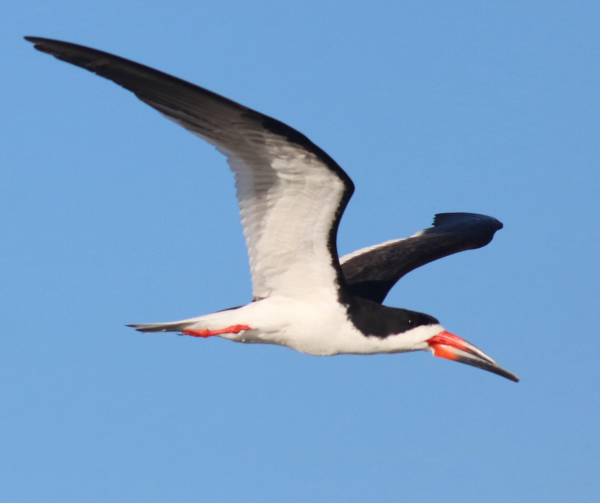
Black Skimmers banded recently in Florida have provided new insights into their behavior and conservation requirements (photo by Paul Konrad).
|
Recent information revealed by monitoring Black Skimmers banded as hatchlings at nesting colonies located along the Atlantic and Gulf Coasts of Florida indicate many skimmers return to their natal colony to nest. However, a significant number of Black Skimmers relocate to different nesting colonies to pair, nest, and raise young. In fact, some banded skimmers flew across the Florida peninsula, spending time on both the Gulf and Atlantic Coasts during spring and fall.
Until recently, little information was known about the age, survival, or seasonal whereabouts of the Black Skimmers that nest at Florida Gulf Coast sites. In 2015, Audubon Florida in partnership with Dr. Beth Forys of Eckerd College began to band skimmer hatchlings in Pinellas County in an ongoing effort to learn about their annual movements. Similarly, since 2017 Audubon Florida biologist Adam DiNuovo has been banding Black Skimmer hatchlings in the nesting colony at Big Marco Pass Critical Wildlife Area as part of a statewide effort to learn more about skimmer behavior and life history.
More than 200 Black Skimmers have been banded since the program began. Each skimmer is fitted with two bands – a US Geological Survey numbered metal band on the lower left leg and a green plastic band with a unique white three-digit code fitted on the lower right leg. The green bands’ codes can be seen from a distance by using binoculars or a spotting scope, which allows biologists to identify individual birds without having to capture them.
Preliminary data suggests that we really need to focus on the region-wide importance of these nesting areas, in addition to protecting individual nesting colonies, Adam DiNuovo explained. Overall, banding birds helps biologists and site managers assess nesting colony health and plays a big part in identifying critical nesting, feeding, and resting sites. This information in turn helps to inform management and protection strategies.
To refer to the original Florida Audubon article, see https://fl.audubon.org/news/black-skimmer-banding-study-yields-surprising-results